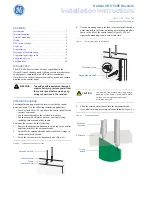
46
9
SELECTIVE CALL
CTCSS AND DCS
You may sometimes want to hear calls from only specific
persons or groups. In this case, use Selective Call. This
transceiver is equipped with CTCSS (Continuous Tone
Coded Squelch System) and DCS (Digital Coded Squelch).
These Selective Calls allow you to ignore (not hear)
unwanted calls from other persons who are using the same
frequency. The transceiver unmutes only when it receives a
signal having the same CTCSS tone or DCS code.
Receiv
ed
Rejected
Rejected
CTCSS freq.:
82.5 Hz
CTCSS freq.:
82.5 Hz
CTCSS OFF
CTCSS freq.:
100 Hz
Note:
CTCSS and DCS do not cause your conversation to be
private or scrambled. It only relieves you from listening to unwanted
conversations.
CTCSS
A CTCSS tone is a sub-audible tone and is selectable
from among the 42 tone frequencies listed in the table
on page 47. The list includes 37 EIA standard tones and
5 non-standard tones.
To activate CTCSS, press
[F]
,
[CALL]
.
• As you press
[F]
,
[CALL]
, the selection cycles as follows:
“OFF”
➞
“TONE”
➞
“CTCSS”
➞
“DCS”
➞
“OFF”.
• “CT” appears on the upper part of display, indicating that the
CTCSS function is activated.
When CTCSS is ON, you will hear calls only when the
selected CTCSS tone is received. To answer the call, press
and hold Mic
[PTT]
, then speak into the microphone.
Note:
◆
You cannot use the CTCSS and Tone/ DCS functions
simultaneously. Switching the CTCSS function ON after having
activated the Tone/ DCS functions deactivates the Tone/ DCS
functions.
◆
If you select a high CTCSS frequency, receiving audio or noise
that contains the same frequency portions may cause CTCSS to
function incorrectly. To prevent noise from causing this problem,
select an appropriate squelch level {page 14}.
◆
While transmitting the 1750 Hz tone by pressing
[CALL]
{page 25}, the transceiver does not transmit the CTCSS tone.
















































